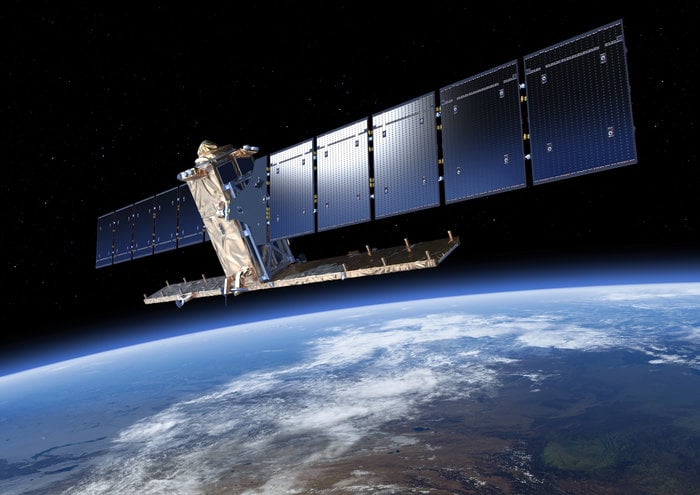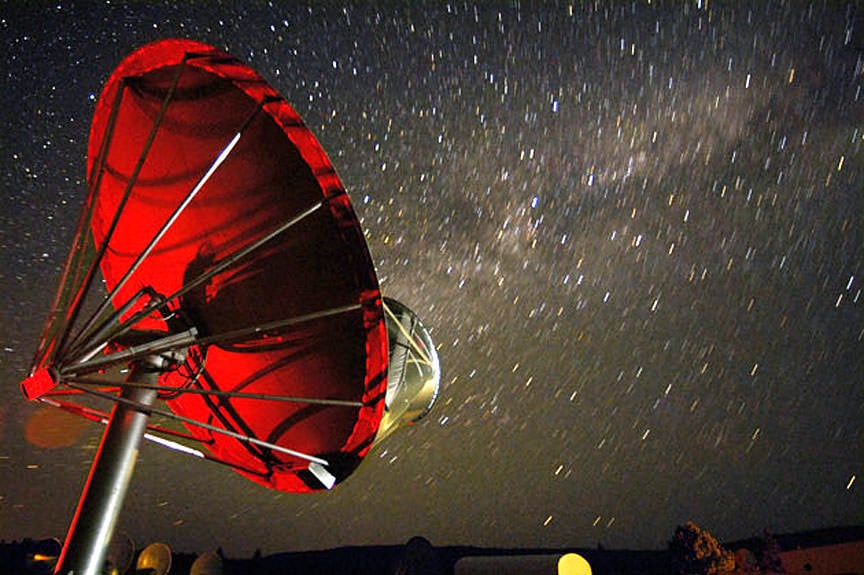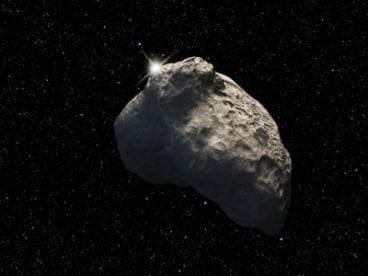
In the latest new to emerge about the "impossible" EM Drive, it now appears that the technology has passed the critical milestone of peer review
Continue reading

Freddie Mercury, the iconic front man from the band Queen, is having an asteroid named after him to commemorate what would have been his 70th birthday.
Continue reading

Great ready for the final eclipse of 2016, with a penumbral lunar eclipse on September 16th visible from Europe to Australia.
Continue reading

Top NASA managers have formally approved the launch of the agency's InSight Lander to the Red Planet in the spring of 2018 following a postponement from this spring due to the discovery of a vacuum leak in a prime science instrument supplied by France.
Continue reading

Continue reading

Colonizing Venus presents many advantages and challenges, and could be done using cities that float on top of its dense atmosphere
Continue reading

Black holes absorb everything that falls into them, including photons of light and heat. So what does it mean to ask, what temperature are black holes?
Continue reading

The first images of Jupiter have arrived from the Juno spacecraft and they are a tantalizing taste of what's to come.
Continue reading

Fossils discovered in Greenland - which are 3.7 billion years old - are the oldest evidence of life on Earth to date, and could help in the search for ancient life on Earth
Continue reading

Continue reading

Continue reading

Continue reading

Despite what you might think, the largest desert in the world is actually in Antarctica. In addition to being the coldest place on the planet, is also the driest
Continue reading

Now more than a year after its historic flyby of Pluto, the New Horizons spacecraft continues to speed through the Kuiper Belt. The spacecraft recently spotted another KBO, one of Pluto's pals, Quaoar.
Continue reading

Since the late 17th century, scientists have been attempting to measure the speed of light, with increasingly accurate results
Continue reading

Continue reading

NASA's new GLOBE Observer app allows users to observe the sky in their location and share the data with NASA.
Continue reading

Four years after a nail biting touchdown on the Red Planet, NASA's SUV-sized Curiosity rover is at last nearing the long strived for "Murray Buttes" formation on the lower reaches of Mount Sharp.
Continue reading

A new study offers a possible explanation for the strange surface features on Mars' moon of Phobos, which could help us to better understand the Red Planet too
Continue reading

After reviewing data from the Sentinel-1A satellites on-board cameras, the ESA has determined that it suffered a collision with a tiny object in orbit
Continue reading

Continue reading

CAPE CANAVERAL, FL — The telecommunications giant SES is boldly going where no company has gone before by making history in inking a deal today, Aug. 30, to fly the expensive SES-10 commercial satellite on the first ever launch of a 'Flight-Proven' SpaceX booster - that's been used and recovered.
Continue reading

Astrophysicists looking for the Milky Way's missing matter have found that our black hole was very active only 6 million years ago.
Continue reading

Continue reading

Relying on Hubble data, a new study has suggested that (contrary to hot and cold models) dark matter may actually be "warm" in nature
Continue reading

In Africa this week? The final solar eclipse of 2016 graces the continent this week. This eclipse is annular only, as the Moon fails to fully cover the disk of the Sun.
Continue reading

KENNEDY SPACE CENTER, FL - OSIRIS-Rex, the first American sponsored probe aimed at retrieving "pristine materials" from the surface of an asteroid and returning them to Earth has been fully assembled at its Florida launch base and is ready to blastoff ten days from today on Sep. 8. It's a groundbreaking mission that could inform us about astrobiology and the 'Origin of Life.'
Continue reading

Outside of the ESO, there are others who have been hunting for exoplanets around Proxima Centauri - including Dr. Kipping of the Cool Worlds lab
Continue reading

We're not saying its aliens, but this could be the most enticing signal from space since the famous "Wow! Signal" in 1977.
Continue reading

I've always struggled to take a good picture of the Milky Way, even though I've got pretty good camera gear. My friends Cory and Tanja Schmitz from Photographing Space give me tips and advice to taking a better Milky Way photo, and then show me what to do in Photoshop to make it even better.
Continue reading

Continue reading

NASA has taken a major step towards the launch of its Mars 2020 rover, which included awarding a launch services contract to United Launch Alliance.
Continue reading

NASA's JUNO spacecraft successfully swooped over the Jovian cloud tops today, Saturday, Aug. 27, gathering its first up close images and science observations of the 'King of the Planets' since braking into orbit on America's Independence Day.
Continue reading

A SpaceX commercial Dragon cargo ship returned to Earth today, Friday, Aug. 26, 2016, by splashing down safely in the Pacific Ocean - thus concluding more than a month long stay at the International Space Station (ISS). The vessel was jam packed with some 1.5 tons of NASA cargo and critical science samples for eagerly waiting researchers.
Continue reading

There are places in the Solar System where the forces of gravity balance out perfectly. Places we can use to position satellites, space telescopes and even colonies to establish our exploration of the Solar System. These are the Lagrange Points.
Continue reading

Upon his return to Earth, astronaut Jeff Williams will have established a new record for most time spent in space, at 534 days
Continue reading

On Saturday, August 27th, NASA's Juno mission will once again make history as it conducts the closest flyby of Jupiter to date
Continue reading

An effectbased on the observations of over 4,500 citizen scientists in the UK during the partial eclipse on March 20, 2015, this effect is not just a figment of anyone's imagination; it is a real phenomenon.
Continue reading

With so many exoplanet discoveries around distant (and neighboring) stars, it might be time to assess what terms like "Earth-like" really mean.
Continue reading

A recent study by funded by Starshot attempts to address one of the biggest challenges in interstellar travel - the risk of collisions
Continue reading

The ESO has officially confirmed the discovery of terrestrial planet orbiting Proxima Centauri, making it the closest exoplanet to our Solar System ever discovered
Continue reading

Tomorrow, August 25, 2016, the US National Park Service celebrates its 100th anniversary. This incredible new timelapse brings you to Yellowstone National Park, allowing you to "find your dark skies" over the many dramatic geysers and hot springs there.
Continue reading

Up for a challenge? Over the next two weekends, two asteroid occultations pass over North America. These are both occulting (passing in front of) +7th magnitude stars, easy targets for even binoculars or a small telescope. These events both have a probability score of 99-100%, meaning the paths are known to a high degree of accuracy. These are also two of the more high profile asteroid occultations for 2016.
Continue reading

SpaceX has placed the first stage of the rocket that made the first-ever successful landing on display at its headquarters in Hawthorne, California.
Continue reading

This Wednesday, the ESO will be holding a press conference, and hopes are high that it will address the possible existence of an exoplanet around Proxima Centauri
Continue reading

Continue reading

Continue reading

Continue reading

In what they are referring to as an "internal matter", CERN has announced that it will be investigating the video prank that took place on its Geneva campus
Continue reading

In a study of deep ocean cores, scientists have uncovered the remains of magnetic fossils that point to a nearby supernova blast that may have altered Earth's climate 2.5 million years ago.
Continue reading

 Universe Today
Universe Today














































